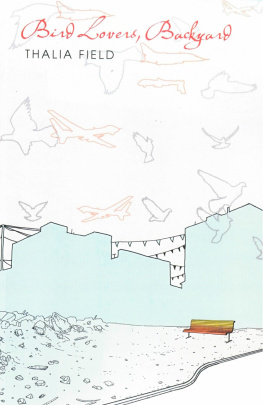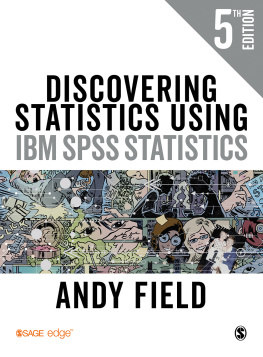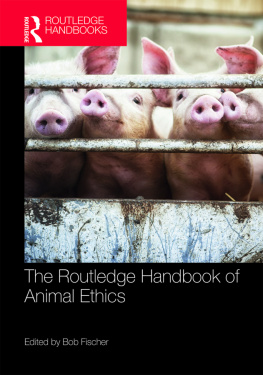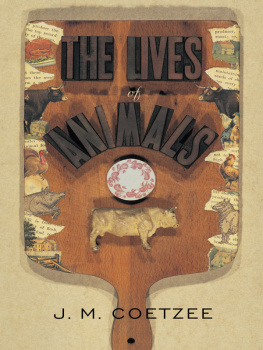Bird Lovers,
Backyard
by THALIA FIELD
Available from New Directions
Point and Line
Incarnate: Story Material
Bird Lovers, Backyard
Copyright 2001, 2007, 2008, 2009, 2010 by Thalia Field.
All rights reserved. Except for brief passages quoted in a newspaper, magazine, radio, or television review, no part of this book may be reproduced in any form or by any means, electronic or mechanical, including photocopying and recording, or by any information storage and retrieval system, without permission in writing from the Publisher.
Grateful acknowledgment goes to the following journals for printing pieces from this book in earlier forms: Angelaki(Journal of the Theoretical Humanities), Bombay Gin, Gulf Coast, Tin House, Seneca Review.
Quotes in this manuscript are from Le Corbusiers City of Tomorrow and Toward a New Architecture; Adams Task and other writing by Vicki Hearne, and the many works and articles of Heini Hediger and Konrad Lorenz. Quotes from Bandit: Dossier of a Dangerous Dog, by Vicki Hearne, 1991, and King Solomons Ring, by Konrad Lorenz, 1938, used courtesy of HarperCollins Publishers. Quotes from On Aggression, by Konrad Lorenz, 1963, 1966, used courtesy of Houghton Mifflin Harcourt. Quotes from The I-Ching or Book of Changes (Wilhelm/Baynes), 1967, used courtesy of Princeton University Press. Other sources include Mark Jerome Walterss A Shadow and a Song (Chelsea Green Publishing Co., 1987) and The Stanford Encyclopedia of Philosophy.
Pigeon photos on p. 132 used courtesy of Willam C. Lopez The New York Times / Redux.
Book design by Sylvia Frezzolini Severance
Manufactured in the United States of America
New Directions Books are printed on acid-free paper.
First published as a New Directions Paperbook (NDP1178) in 2010
Library of Congress Cataloging-in-Publication Data
Field, Thalia 1966
Bird lovers, backyard / Thalia Field
p. cm.
ISBN 978-0-8112-1840-5 (pbk. : acid-free paper)
I. Title.
PS3556.I398B57 2010
811.54dc22
2009050726
eISBN: 9780811229210
New Directions Books are published for James Laughlin
by New Directions Publishing Corporation
80 Eighth Avenue, New York 10011
for my son who asked me,
What if everyone in the world wasnt nice?
When an individual is seen gliding through the woods
and close to the observer, it passes like a thought,
and on trying to see it again, the eye searches in vain;
the bird is gone.
J. J. Audubon
Never trade awareness for language.
Vicki Hearne
Bird Lovers,
Backyard
Apparatus for the Inscription
of a Falling Body
8:31
What is it exactly to perform philosophy?
8:35
We arrive at the food court ready to think. Someone polished buildings all night, sandblasted metal, washed the billboardswe hear theyre using prisoners for the labor.
8:37
Instead of narrative build-up, what if we have Icarus crawling right into the waterwings on, indifferent to flightskipping past the story-part to lie down in the ending?
8:39
What about ten thousand Icaruses crawling into the water, wings untested?
8:40
What about a millionconvinced just to skip the whole drama, wade in and float therewet, sinking, unmoved by the sun?
8:43
The people who build large citiesmonuments, stadiumsfind themselves with unexpected trouble. They call on their friends. Enemies. But, finally, it comes down to thinking about it. The life of the mind weighs hard. Look at it from the side of architecture? In point of fact, some of these buildings have a real pigeon problem.
8:46
An old man on the sidewalk this morning: hat, walking stick. As he stepped between cars, we saw pigeons jumping and crowding. He crossed before we caught his face.
8:48
If pigeons were the only problem, this might be an easy contest to win.
8:50
No one else seems to be here.
9:01
At what point is a story finished? Do lives add up when theyre over, or not at all? In other words, wings are fine, but the only way to see where they got you would be to lie awhile in the ending.
9:04
Somehow this is what weve come to consider as we sit in the food court with watery coffees, notepads, folders, and an old paperback by Corbusier. Were weighing out a variety of ramifications of the falling body problem. There will be heat produced by falling bodies; this seems impossible to fake. If an entire animal were burned, there would be the measure of its potential energy. A non-falling Icarus would drown cold with unused momentum.
9:08
In this vast agora there are distant figures polishing counters. There are maybe one thousand chairs and a quarter that number of tables. Its the biggest food court weve ever seen. Scattered umbrellas, non-native plants, trash stations. But here are old, oily pigeons, and pearly ones with a bright look. Many with one red foot clubbed or dismemberedby car accidents? Disease? When they take off, it is with a blast of effort and an alarming closeness.
9:17
We saw a pigeon on the ramp as flat as a leafa leafletjust beside the guardrail. People turned their eyes from the clotted feather and bone.
9:19
Its not quite a war on pigeons yet. Remnants of public opinion still constrain the brutality of government, and we think thats why were here. Handguns are not drawn. If employees eliminate pigeons with air-powered pellet rifles, the sports fans get upset. So they say, No shooting on game days. The cheering once scared pigeons off, but it seems theyve adapted. On the contest flyer, it said owners have tried strobe lights, fake owls, netting.
9:22
So they advertise a thinking contest to bring the problem home.
9:23
Just yesterday, a boy placed an injured pigeon at the top of a playground slide, with a capful of water and part of a sandwich. One pigeon or many pigeons, number is marked on the noun in our language. This is what theyre working against. When small boys are the enemy, its hard to draw the right weapons. An unnamed number of cars cross the ramp. An unnamed number of pigeons receive food. Its a philosophical problem suffocated with anecdotes: where the line between many and a few is perceived. A group of sparrows finds something worth pecking a few tables away. The instinct for order, the tidying up. Is that it? Sparrows dont bother anyone. They hop on and off our tables with barely a mention.
9:28
On the same day, the same pigeon can be treated with indifference, hostility, or friendlinessthe latter mostly from small children and the elderly. A cookie drops to the ground. Several pigeons work the larger pieces into manageable size. It is impossible to tell which response will comebut there are generalizations. Women react as if pigeons insult them. Boys chase them for a rise. Men scoff. (Flying rats... ) A home consists of a color or smell. Yet during library hours, heaps of bags consume a chair. A public trespass? Restaurants leave food at the back door. Weve heard theories that say we are the children of space dust. What other kind of life did we know?
9:37
One gets the feeling in this food court that the buildings are watching, but no one can see us. We know, logically, there are millions of workers, and yet we feel no contact is possible. Where do they eat? We see a half-muffin on a chair.

















